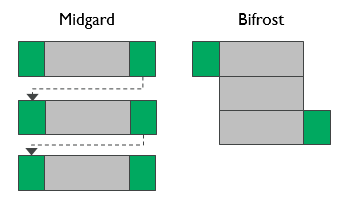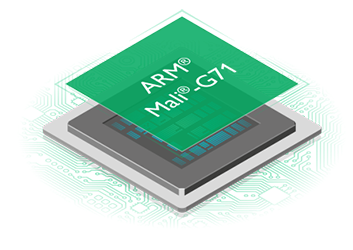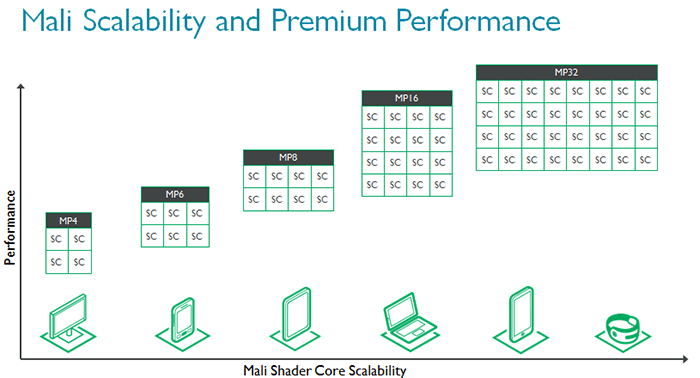Introducing Mali G71
 |
 |
This is a guest blog by Espen Oybo, GPU Product Manager, and Freddi Jeffries, GPU Content Manager, ARM. The views expressed in this blog are theirs and theirs alone. We invited Espen and Freddi to share some of their thoughts on the company's fastest-ever graphics, Mali-G71.
Mali-G71 Graphics Processor: Pushing the Boundaries of Premium Mobile Design
Since the rise of the smartphone, device capability has continually pushed the boundaries of technology. Not content with basic phone capability, consumers now demand more of devices, whether it’s streaming 4k video direct to a TV or playing console-quality games on the go. All these things place greater pressure on achieving superior processing power with the lowest possible energy expenditure. As camera quality and screen resolutions grow, bezel thickness and thermal capacity shrink, demanding the next generation of processors reach new heights of energy efficiency in order to support next level premium mobile content. These challenges continue to drive innovation and have been a key consideration in product development, resulting in the recently launched Mali-G71.
Mali-G71
The Mali-G71 GPU is the latest in the Mali high-performance family of GPUs. Built on the new Bifrost architecture, Mali-G71 helps deliver a new level of high-end mobile graphics capabilities whilst still maintaining Mali’s position as a leading GPU.
Mali-G71 was developed taking into account the advanced use cases for high end mobile like Virtual Reality (VR), Augmented Reality (AR) and 3D gaming; and modern APIs such as Vulkan and OpenCL 2.0. It’s been a few years since the pinnacle of mobile gaming was Snake, but the industry has advanced so fast and so far since then that even today’s high-end devices could struggle with the next generation of gaming requirements. Mali-G71 aims to address this potential shortfall by looking ahead to the next level of mobile graphics and ensuring the devices it powers will be more powerful and efficient than before. So much so, that devices powered by the Mali-G71 GPU are even capable of competing with mid-range laptops in terms of graphics capability.
Bifrost
The new Mali Bifrost architecture includes numerous innovations and optimizations. Here, we’ll highlight just a few.
Claused shaders, for example, allow you to group sets of instructions together into defined blocks that will run to completion atomically and uninterrupted. This means we can be sure all external dependencies are in place prior to clause execution and we can design execution units to allow temporary results to bypass accesses to the register bank. This reduces the pressure on the register file, drastically decreasing the amount of power it consumes and also contributes to area reduction by simplifying the control logic in the execution units.

Claused shaders provide significant power savings
Another innovation in the Bifrost architecture is Quad-based vectorization. Midgard GPUs used SIMD vectorization which executed one thread at a time in the pipeline stage and was very dependent on the shader code executing vector instructions. Quad vectorization allows four threads to be executed together, sharing control logic. This makes it much easier to fill the execution units, achieving nearly 100% utilization and better fits recent advances in how developers are writing shader code.
Scalability
The previous generation of high-performance mobile GPUs scaled from 1 to 16 cores. To reflect the growing performance requirements of mobile devices, Mali-G71 can scale from 1 - 32 cores. The scalability of Mali-G71 means superior graphics performance is available across a wide range of devices from DTVs through high-end smartphones to cutting-edge VR headsets, either mobile-based or standalone. This flexibility, along with the 40% improvement in area efficiency, allows designers to configure their system to their exact requirements, striking a balance between power, efficiency and cost.












